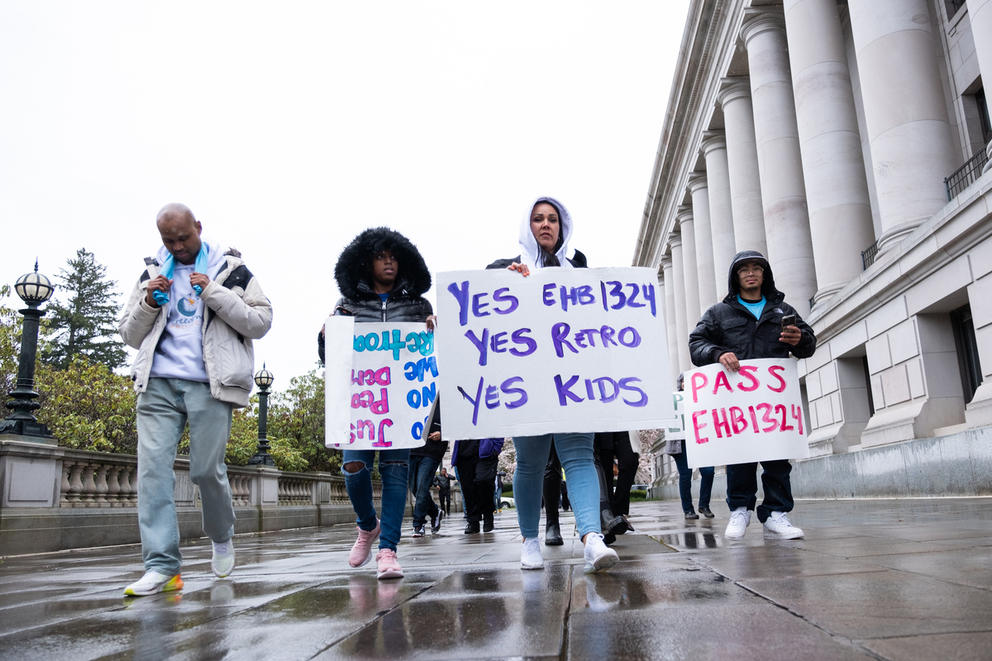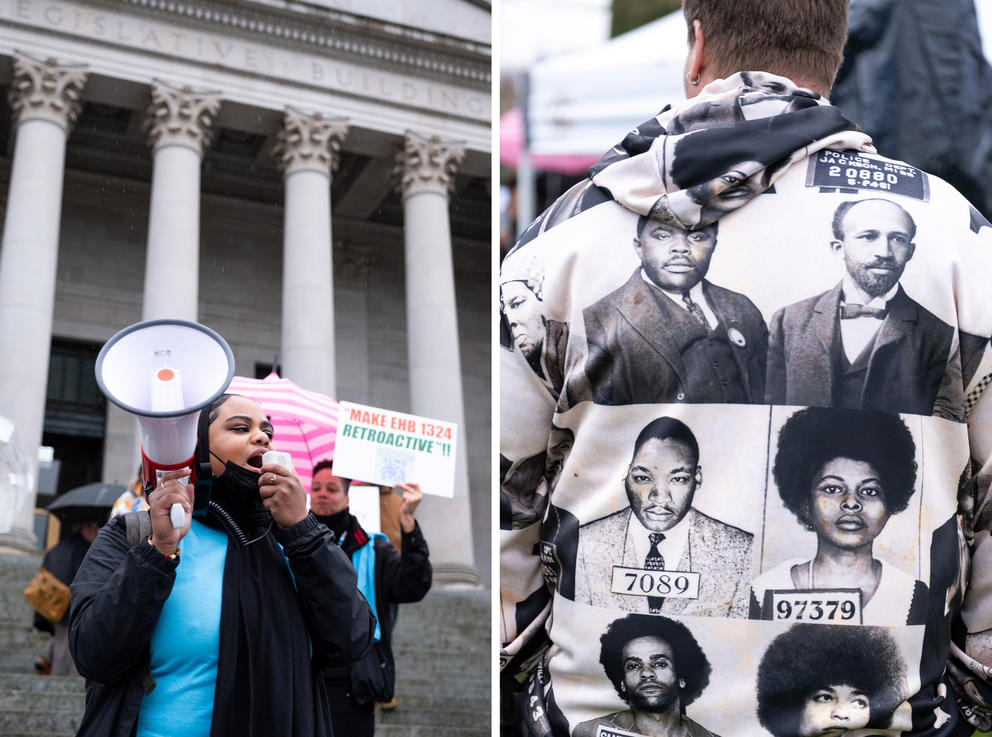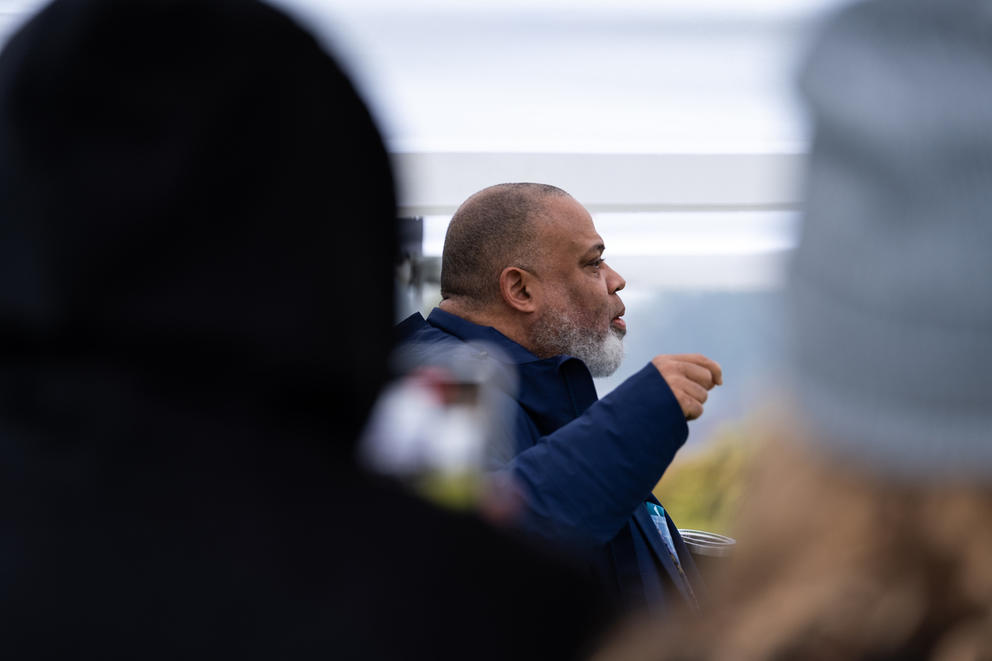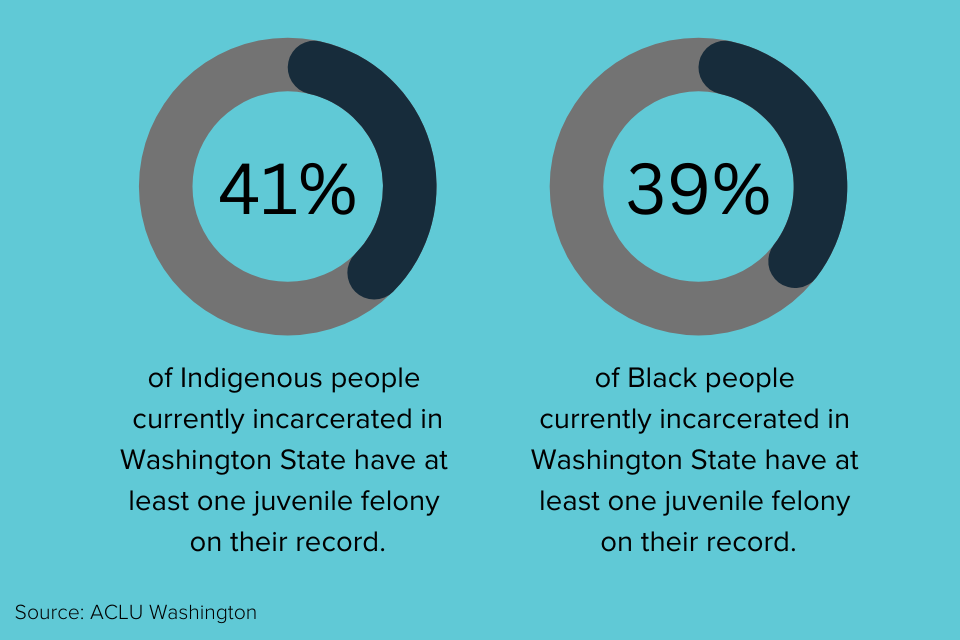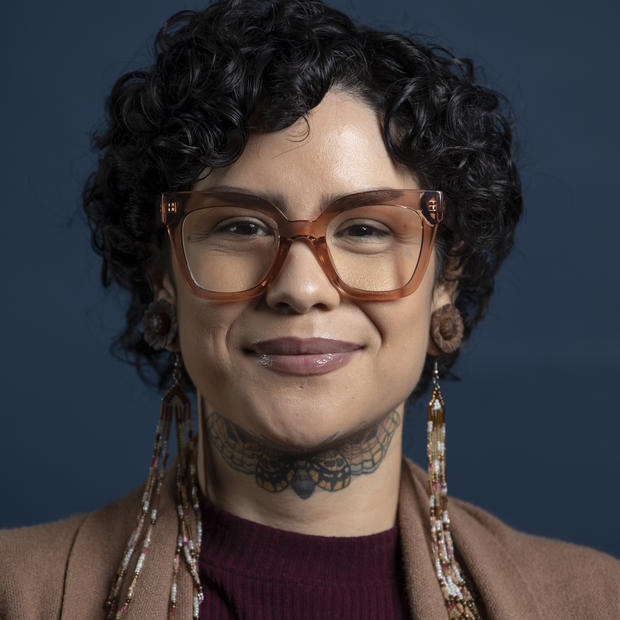The measure, which would still allow juvenile convictions to influence adult sentences in the cases of murder in the first or second degree as well as felony sex offenses, passed the Senate on April 11 and the House on March 3.
The superpredator myth
Chelsea Moore, ACLU WA’s smart justice policy expert, said the use of juvenile judgments in adult sentences can be traced back to the racist “superpredator" myth.
“That was a theory developed by a professor at Princeton that basically said that some children are inherently violent and need to be locked up and have the key thrown away,” Moore said. “The theory was racially coded, and was mostly directed at young Black boys. Ironically, the professor who developed the theory has since disowned it and apologized, but much of the legislation that was enacted because of this bad science has stuck around.”
HB1324 would not prevent judges, prosecutors or even the public from being able to see a person’s juvenile record or prevent judges from considering that record when deciding a sentence. But it prevents adult sentences from being automatically longer because of a crime they committed as a child, and brings the state in line with the majority of other states. Right now Washington is one of 11 states that has held onto the policy put into place based on the debunked “superpredator” theory.
The juvenile justice proposal also takes into account modern brain science that shows that until age 25, a person’s brain continues to develop in the prefrontal cortex, the area responsible for planning, prioritizing and controlling impulses. Indigenous social justice organizations like Huy, Chief Seattle Club and Native American Reentry Services, along with eight Native nations across Washington state, wrote to Jinkins requesting that the bill be passed as originally written, pointing to the historic intergenerational trauma resulting in afflictions like fetal alcohol syndrome, which Native newborns experience at a rate more than eight times the national average.
“Psychological factors, such as the fear experienced by pregnant Indigenous mothers who are battered, create physiological changes that negatively impact Indigenous brain development,” said the April 11 op-ed in The Herald of Everett by Derrick Belgarde, Chief Seattle Club’s executive director; Gabe Galanda, Huy’s chairman; and Winona Stevens, Native American Reentry Services’ executive director. “The sordid history of Tribal displacement and Indigenous family separation at the hands of the U.S. government has created a cycle of intergenerational trauma that manifests in substance use and domestic violence within Tribal communities. It all now compounds through mass incarceration,” they wrote.
Left: Na'Quel Walker, community organizing director at Collective Justice, leads a chant on the steps of the legislative building at the Washington State Capitol. Walker and others were rallying to reintroduce retroactivity into HB 1324, allowing currently incarcerated people to benefit from the bill.
Right: Alex Nayo wears a sweatshirt with the faces of famous civil rights activists during a rally for HB 1324. Nayo said that with retroactivity, the bill had the chance to "make some rights for some wrongs." (Conor Courtney for Crosscut)
Sentencing disparities
According to Department of Corrections data collected by the ACLU, significant racial disparities exist in the current system of mandatory sentence enhancements using juvenile judgments. More than 40% of currently incarcerated Indigenous people have a juvenile felony on their record, as do 39% of Black people currently incarcerated. People of color are facing longer sentences because they were involved in the juvenile system as children.
“We know that children of color are much more likely to get caught up in the juvenile system,” the ACLU’s Moore said. “A schoolyard fight for a white child is much more likely to result in a trip to the school counselor, whereas we know for a child of color, they’re much more likely to be charged in the juvenile system for the same behavior. This difference in treatment follows that child for the rest of their life and can result in harsher punishments if they end up in the adult system.”
Indigenous youth are 3 times more likely than white youth to enter the prison pipeline through referral into the juvenile justice system than to have criminal charges dropped, according to the Washington State Partnership on Juvenile Justice. This has resulted in the overrepresentation of Native people among those receiving long sentences, very long sentences, and life sentences in Washington's prisons. And while arrest rates for white, Black and Asian youth are falling, the arrest rate for Indigenous youth is increasing, according to The National Center for Juvenile Justice.
“HB 1324 is needed in order to allow our communities a chance to heal and renew,” Galanda told Crosscut.
Research done by the National Child Traumatic Stress Network revealed that upward of 90% of incarcerated youth have reported some type of trauma; 70% have a mental health disorder; and at least 30% have post-traumatic stress disorder (PTSD).
Sean Goode, who just recently stepped down as director of Choose 180, a nonprofit that works to transform systems of injustice while supporting the young people who are disproportionately impacted by those systems, spoke to what he called the court system’s failure to acknowledge the trauma that results in youth arrests and its failure to rehabilitate them.
“The criminal legal system doesn't actually do much to meet the needs of people who are harmed to provide them the long-term support they need to heal,” Goode said. “If our system was focused on healing, we'd have different outcomes for both those who have been harmed and those who have been accused of causing harm.”
And that harm continues for youth when they are incarcerated, according to Moore, who conducted a qualitative survey among currently incarcerated people who were involved in the juvenile justice system.
“The results of that survey were heartbreaking,” she said. “So many people reported being abused in our juvenile facilities. Instead of breaking the cycle of harm, being ensnared in the juvenile system – experiencing that trauma – made them much more vulnerable to being caught up in the adult system.”
Representative David Hackney speaks in favor of reintroducing retroactivity to HB 1324 at a rally at the Washington State Capitol on April 6, 2023. Hackney touched on his own experience with the criminal justice system, explaining how he and society had benefitted from leniency rather than punishment. (Conor Courtney for Crosscut).
The cost of change
People opposed to the bill were more concerned about the extra work the measure would cause for court officers involved in resentencing hearings for people whose sentences were increased in the past because of prior juvenile offenses. “The idea to go back and retroactively apply and resentence individuals is, from our association, a nonstarter,” said Russell Brown, executive director of the Washington Association of Prosecuting Attorneys, during the Jan. 23 public hearing before the House Committee on Community Safety, Justice, & Reentry. “There are not enough folks to do the type of work that would be required here.”
“Resentencing as a logistical inconvenience is a privileged perspective that can only be held by a person who puts people in prison and not those who have had to suffer incarceration,” Goode said during the Jan. 23 hearing.
After hearing this logistical concern, ACLU WA worked with the Washington State Superior Court Judges’ Association and their data analyst, and came to an agreement that the retroactive component of the bill would impact 809 to 1,437 people.
“Based on these numbers, Judge O’Donnell and the SCJA have come to neutral[ity] on the bill — which is a huge win,” Moore said. “This number is a manageable number for the courts.”
Also, ACLU WA worked with SCJA to ensure that the House included, in its proposed budget, its requested funding for resentencing hearings so that the work doesn’t overburden the court.
“We’re very grateful that the House agrees with us that funding resentencings to help right a historical wrong is a worthy cause,” Moore said. “Ultimately, the bill will save the state millions of dollars. It costs around $42K a year to incarcerate someone. We have people sitting inside right now serving unjustly long sentences because of this bad policy. The $662,000 it costs to fix that is ultimately worth it.”
Moving forward
But even with this new data and growing support, when the bill reached the Senate in March, it was amended to apply only to future cases. The Senate and House will need to work out the differences before they can pass the measure to the governor.
Moore called the Senate change devastating. “The Legislature is acknowledging that this practice is wrong, that we’ve been doing the wrong thing for the last 25 years and causing grave harm to young people, and in particular, young Indigenous people and young Black people,” Moore said. “Yet, while they’re willing to acknowledge this, they’re not willing to take accountability for those wrongs by looking back and redressing the harm for the people who have already been hurt by this bad policy.”
She said that with this change, people will be sitting in prison, in some cases for additional decades, because of enhanced sentences that no longer exist.
Galanda, chairman of Huy, called the Senate bill performative. “The Senate committee amendment represents a justice opportunity lost for our state’s original peoples,” Galanda said. “There is a lot of performative talk about ‘restorative justice’ for Indigenous people, but very little systemic change that tangibly improves our lives or genuinely honors our humanity.”
On April 11 the Senate passed the bill with the amended language that excludes the resentencing reconsiderations.
“When it matters the most, Indigenous humanity simply does not matter to the powers that be,” Galanda told Crosscut after the amended bill passed.
Correction: An earlier version of the story misidentified Gabe Galanda as the executive director of Huy at the end of the story. The story has been corrected.

